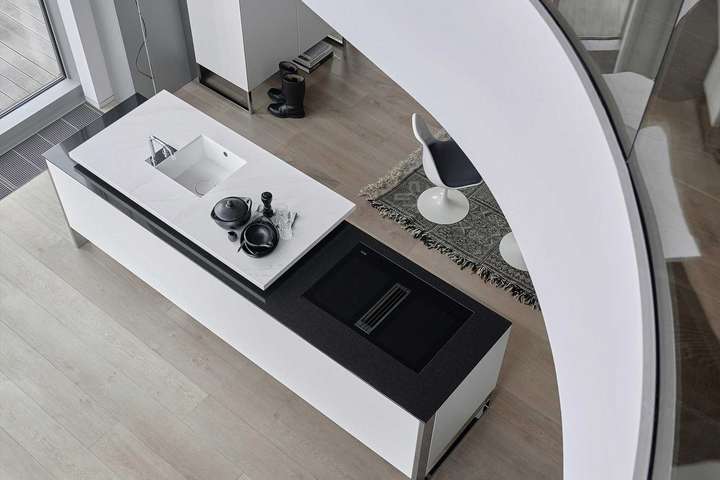Architecture and living have always been a reliable mirror of society. Especially when economic and social structures change as rapidly as they do at present. Between digitalisation and the close networking of people with machines, job-sharing, co-working and new forms of living together, the cards are constantly being shuffled anew.
To be able to adapt perfectly to these conditions, living contexts and ideas, flexibility is needed above all. “Life in the 21st century requires adaptive spaces that meet the changing needs of users. Flexibility is particularly necessary when space usage changes quickly, when there is not enough space and a room has to fulfil various functions,” explains Armin Ebner, co-founder of the Viennese architecture firm BEHF. One of the most recent projects of the renowned office is the interior design of the new “Porto Bar” in the “Das Triest” hotel in Vienna. Ebner is certain that smaller apartments in particular must be efficient and flexible today: “The classic room typologies are blurring. Eating in the bathroom, working in the kitchen, sleeping in the living room. Spatial planning is therefore based more on basic human needs such as withdrawal, exchange or concentration”. The award-winning Vorarlberg architect Jürgen Haller also sees it this way: “We try to develop multiple uses in our projects. The cooking and eating area usually plays an important role in this. But more intimate rooms such as bathrooms, dressing rooms and bedrooms are also combined,” says the 41-year-old.
A flourishing concept

It’s the floor plan that makes the difference
By the way, Haller is convinced that flexibility begins with the floor plan: “It is impossible to foresee everything conceivable. It is more important to consider flexibility in the layout and development situation. In order to ensure multiple use also at later points in time, it is necessary to pay attention to room layout, proportions or the arrangement of doors and windows”.
No wonder, then, that modern construction always includes accessibility. Above all, an open, flexible floor plan provides freedom of movement not only in old age. Young families are also happy about a threshold-free design, large doors, ramps and lifts – just because of the bulky prams. And those who had the misfortune of having to move on crutches for a few weeks know what a challenge stairs or showers can be. You just don’t know what the future holds.
Clever & Smart?
Except maybe that it could be smart to live in. At least, according to the opinion of the companies that presented the latest products for the smart home at the CES in Las Vegas, the world’s largest trade fair for home electronics. From the alarm system to the heating system to the bedroom alarm clock and the blinds, everything is to be controlled via smartphones or PC. For tech companies such as Siemens, Bosch and Lenovo, 2019 will be a key year in this respect – even if the statistics show that there is still a lot of room for improvement at the moment: The Gallup Institute recently found that only seven percent control their household appliances via the Internet. That doesn’t quite sound like the digital revolution yet.
By the way, the new trend is to connect smart homes in the sunroom. If you are interested in this topic, you can read more on the LGL website.
Jürgen Haller also dampens the hype surrounding smart homes a little: “In the future, these high-tech rooms and buildings will return to normal. In any case, only the buildings in which the building owners have also dealt with this technology will function properly.” And Armin Ebner of BEHF also finds clear words: “The digital ‘all-rounders’ are still in their infancy. Today’s ‘smart’ is not smart enough. The omnipresent digitalization of our lives, however, is a counter-trend to the opposite: an opposite longing for the analog, the real and the natural.”

My friend, the tree
And this longing not only becomes perceptible, but increasingly visible. “Natural, haptic surfaces in warm colours are among the biggest interior design trends,” says Jürgen Haller, who, by the way, often likes to build and plan with wood. “Fortunately, we are able to realise many projects in near-natural locations. And in cramped situations we try to bring nature into the house with eye-catching references or corresponding room openings.
Bringing nature into the house and the creation of a green infrastructure, especially in urban areas, is an important point, by the way. “In order to return nature zones to the urban space, we begin with the renaturalization of open spaces and the development of a new urban space.